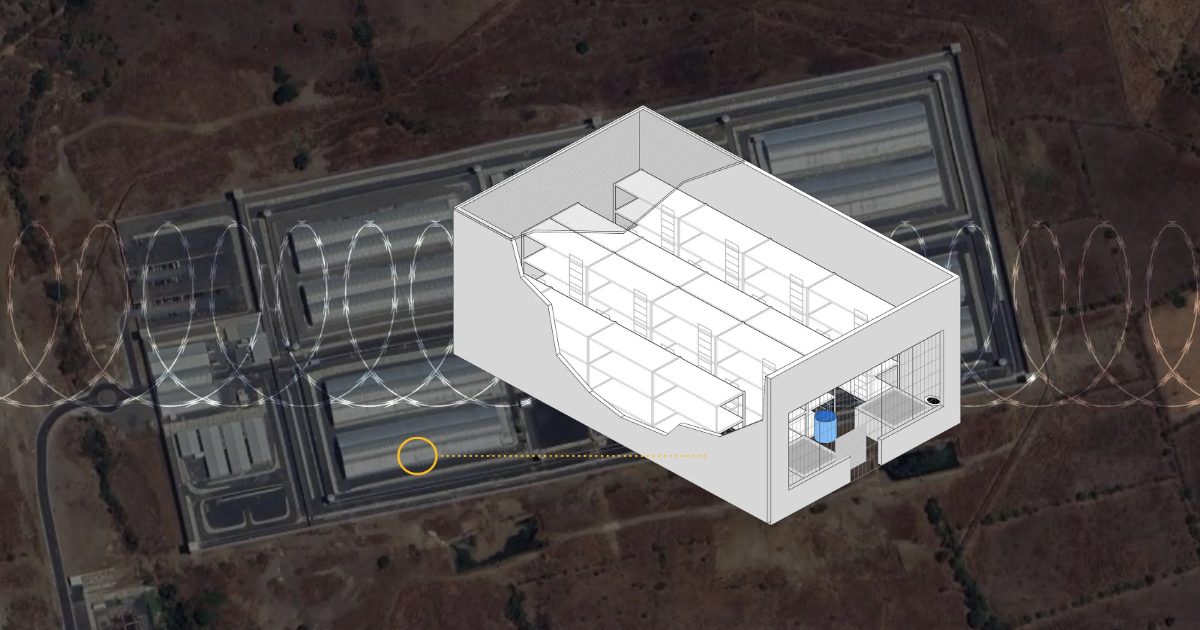El Salvador’s infamous CECOT prison is a maximum-security facility built to hold the country’s worst criminals in eight buildings across a space equal to seven football stadiums.
The Center for the Confinement of Terrorism is where Kilmar Abrego Garcia, a Maryland resident and Salvadoran native who was granted legal protection to stay in the U.S., is being held. He was deported to El Salvador by the Trump administration following an “administrative error” on March 15.
Officials on Wednesday refused to let U.S. Sen. Chris Van Hollen, D-Maryland, visit Abrego Garcia. Van Hollen is pressing for his release.
Under an agreement with President Donald Trump, more people may be deported from the U.S. to this prison. Here is a look inside.
Where is CECOT located?
Can’t see our graphics? Click here to view them.
CECOT is in the rural area of Tecoluca, El Salvador, about 45 miles southeast of the nation’s capital of San Salvador. It took a year to build and and cost about $115 million. The facility began receiving inmates in February 2023.
It was built in response to shocking brutality in the country, including a surge in gang-related killings.
El Salvador, which endured years of civil war and repression, had among the highest homicide rates in the world in the aftermath, USA TODAY reported. In 2015, it was known as the most violent nation in the Western Hemisphere.
Bukele was elected president with the promise of ending gang violence. He took office in 2019 and announced a state of emergency in 2022 that initiated a government crackdown on gang violence during which, he said, constitutional rights and due process would be suspended.
What’s it like inside CECOT?
We don’t know how many people the prison holds, but its total capacity is estimated at 40,000 inmates, the Guardian reported.
Those who are currently there are housed in eight sectors on the grounds, according to CNN, with more than 24 large cells in each sector. Those cells can reportedly can hold an average of 80 inmates apiece. Each cell has two toilets and two basins, or tubs.
Conditions are described as harsh. Inmates sleep on stacked metal bunks without mattresses or sheets. Artificial lighting is on 24 hours a day. Closed-circuit cameras and armed guards monitor the cells.
Inmates are kept in the cells 23.5 hours a day. They are allowed into cellblock hallways for 30 minutes of exercise or Bible readings each day. Their heads are shaved every five days and they wear all-white prison uniforms of T-shirts, shorts, socks and rubber clogs.
Food is pushed through bars on disposable plates. Utensils are not available and inmates eat with their hands.
Court hearings are conducted online in a special room. There is no other contact with the outside world, including letters from families. Inmates are not allowed to have books or other materials.
Those who attack guards or start fights are sent to small solitary confinement cells that are kept nearly pitch-black. The only light comes from a small hole cut into the ceiling.
A September 2024 report from the Inter-American Commission on Human Rights said the number of inmates was much higher than the latest official figures released and that overcrowding could reach 133%, according to Reuters. The report said each inmate had an average space of 6.45 square feet, a violation of international standards.
CONTRIBUTING Josh Meyer, USA TODAY
SOURCE USA TODAY Network reporting and research; Reuters
